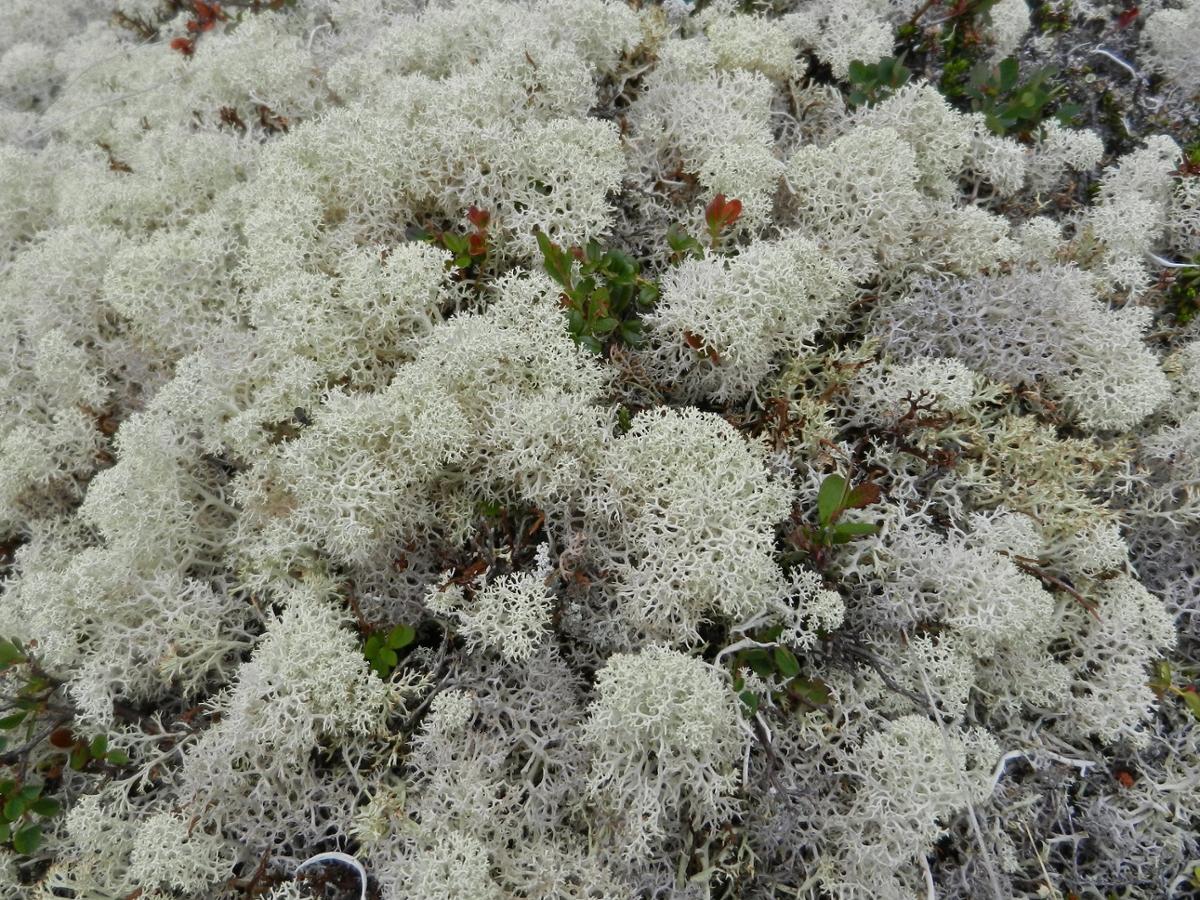It can be a lonely life, being a reindeer lichen. This grayish, furry-looking lichen covers much of the ground in northern tundra, taiga, and forest ecosystems, and like all lichens, it’s composed of a minimum of one species each of fungus and alga. For a long time, scientists thought that reindeer lichen produced primarily asexually. But research shows that—at least in the forests of Quebec—the sex lives of reindeer lichen may be more interesting than previously thought.
Lichens have the ability to reproduce either asexually or sexually. To reproduce sexually, the fungus part of the lichen sends root-like structures to a neighboring fungus to exchange genetic information. Afterwards, the maternal fungus releases and disperses sexual spores. If the spores land on a new algal partner, they grow into a new fungus that’s genetically distinct from its parents.
In asexual reproduction, a piece of the lichen containing both the fungus and alga detaches, disperses, then grows into a new lichen that’s a genetic clone of its parent. Both methods have pros and cons: While asexual reproduction takes a lot less effort, the mixing of genetic material that comes from sexual reproduction lets the species eliminate negative mutations, which benefits the lineage in the long term.
Scientists have assumed that reindeer lichens were mostly reproducing asexually because it was unclear whether they even had spores. However, when scientists studied the DNA of reindeer lichens from different areas in Quebec, they found that the genetic material was a lot more diverse than it would have been if the lichens were only reproducing asexually. Maybe these nondescript lichens aren’t so solitary after all— just discreet.










